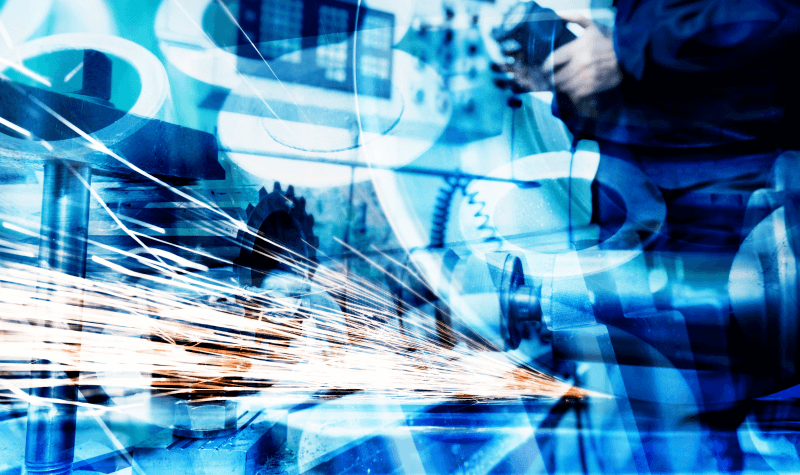
-
DURATION11 WEEKS
-
SUBJECT AREAArtificial Intelligence
-
COURSE LEVELSecond Cycle
-
CREDITS3.0 HP
-
INSTITUTIONUniversity of Skövde
-
STUDY TYPEDistance
-
START DATE2025-11-03
-
END DATE2026-01-18
Applications 2025-03-15 - 2025-11-05
COURSE DESCRIPTION
The course is taught in English
Quality control and defect detection are crucial in most industrial production processes. With modern technologies in Artificial Intelligence (AI), these processes can be automated and enhanced through image-based quality inspections, known as vision systems. This course provides you with a clear understanding of how neural networks work and how they can be used to create effective AI systems for quality control in industry.
In the course, you will learn how neural networks function, particularly for image processing, and how different types of networks can be used for various image-based tasks. The course also addresses challenges that may arise with data when training neural networks. Through practical exercises, you will develop a simple AI-based quality control system using appropriate software tools.
Who is the course for?
This course is aimed at professionals working in the industrial sector who want to learn more about how AI and neural networks can be used to improve quality control. It is particularly useful for engineers, technical experts, and IT specialists working with automation and production efficiency.
After completing the course, you will be able to:
- Describe and explain how neural networks operate for image-based tasks,
- Discuss different types of networks and how they can be applied to various image-based tasks,
- Understand data-related challenges that may occur when training neural networks,
- Implement AI systems for quality control using standard software tools.
Course format
The course is designed to be combined with professional work, meaning:
- The course is delivered online with pre-recorded lectures,
- It is a short course (3 ECTS credits) with a study pace of 20% (approximately 8 hours per week over 10 weeks).
The instruction is primarily conducted in English.
Entry Requirements
If you do not meet the formal entry requirements, you may have your eligibility assessed based on prior learning, including skills and knowledge acquired through work experience, other studies, and more. Read more at his.se/sokwiser.
Developed within WISER
The course is developed within the WISER project. We offer tailored courses for digital transformation aimed at professionals. The project is co-financed by the Knowledge Foundation (KK-stiftelsen) within the framework of Expertkompetens. For more information, visit: his.se/wiser.
courses you may also like

This course teaches you how to build convolutional neural networks (CNN). You will learn how to design intelligent systems using deep learning for classification, annotation, and object recognition. It includes three modules: Image processing: Introduction of industrial imaging through big data and fundamentals of image processing techniques Deep learning with convolutional neural network: Overview of neural network as classifiers, introduction of convolutional neural network and Deep learning architecture. Deep learning tools: Implementation of Deep learning for Image classification and object recognition, e.g. using Keras.

The rapid development of digital technologies and advances in communications have led to gigantic amounts of data with complex structures called ‘Big data’ being produced every day at exponential growth. The aim of this course is to give the student insights in fundamental concepts of machine learning with big data as well as recent research trends in the domain. The student will learn about problems and industrial challenges through domain-based case studies. Furthermore, the student will learn to use tools to develop systems using machine-learning algorithms in big data.

The course aims to give insights in fundamental concepts of machine learning for predictive analytics to provide actionable, i.e., better and more informed decisions in, forecasting. It covers the key concepts to extract useful information and knowledge from data sets to construct predictive modeling. The course includes three modules: Introduction: overview of Predictive data analytics and Machine learning for predictive analytics. Data exploration and visualization: presents case studies from industrial application domains and discusses key technical issues related to how we can gain insights enabling to see trends and patterns in industrial data. Predictive modeling: consists of issues in construction of predictive modeling, i.e., model data and determine Machine learning algorithms for predicative analytics and techniques for model evaluation.

Access to critical minerals and materials crucial to our wealth and well-being must be produced in a sustainable way. This means that the research must deal with metals and minerals that are innovation-critical, necessary for green/smart transition, rare, of insufficient supply or which should not be traded from conflict zones. Various component of the course makes it useful for professionals and hands-on with lectures, assignments, homeworks, fieldcourse and field reports as well as rock physics lab. Topics Sustainable exploration, mining and extraction of critical raw materials Course element: Critical and strategic raw materials Sustainability, SDGs, ESG and social aspects (the value chain) Exploration methods Geological and ore forming context Physical properties Geophysical methods Drilling technologies Extraction and mineral processing methods Rock quality and mining methods Nano-tech solutions Ground water contamination and accessibility Environmental assessments Mine tailing and beneficiation Site visits and hands-on (Epiroc, Blötberget, labs) Course structure The course is a combination of in-person, hybrid and hands-on including field trips. You will learn By the end of the course, you will be able to: analyse what exploration methods are used for what commodities, have good knowledge of the state-of-the-art solutions and incorporate your learning in todays industry practices. Who is the course for? This course is designed for those who are geologists, engineers or work with sustainability to learn how critical raw materials are explored, mined and turn to metals. It is open to both university students but also industry participants from relevant sectors. How much time do I need for the course? The course will run from 25 August - 5 December 2025 and will in sum require 100 hrs of commitments. Check the SERC center for more updates: www.smartexploration.se

Vatten är den i särklass vanligaste miljön på jorden och vad som sker i haven påverkar allt liv på jorden. Även om människan inte bor i eller på vatten så nyttjar vi många ekosystemtjänster från vatten som matproduktion, transporter, elförsörjning och rekreation, och därmed påverkar eller förstör ekosystemen. För att kunna fortsätt nyttja resurser från hav och vatten eller utveckla nya värdekedjor krävs en omställning mot resursutnyttjande utan att riskera viktiga ekosystemtjänster. I denna kurs kommer du lära dig mer om akvatiska ekosystem och hur vi nyttjar och påverkar dem, men också hur resursutnyttjandet kan bli hållbart. Innehåll Grundläggande vattencykel & akvatisk ekologi Ekosystemtjänster från hav och vatten Livsmedelsproduktion, fiske & vattenbruk Havs och vattenplanering "Nature-based solutions", nya råvaror och tjänster Klimatförändringar och framtidens vatten och hav Kursens uppläggKursen ges som förinspelade lektioner och läses i egen takt. Kursen innehåller självrättande quiz för att du ska kunna kolla att du har uppnått inlärningsmålen. För att komma vidare i kursen, och kunna skriva ut ett kursintyg när du är färdig, måste du bli godkänd på quizzarna. Du kommer få kunskap omKursen ger grundläggande kunskaper om akvatiska ekosystem, ekosystemtjänster och hot. Kursen ger även kunskaper och färdigheter för att förstå vad som krävs och kan bidra till en blå omställning av resurser i vatten. Efter genomgången kurs kommer du kunna: redogöra för biologiska samband och olika ekosystemtjänster från akvatiska miljöer och dess betydelse för mänskliga samhällen, analysera hot och målkonflikter mellan olika nyttjanden av akvatiska resurser, förstå hur framtida diversifiering av vatten- och havsanvändning kan skapa en hållbar bioekonomi. Vem vänder sig kursen till?I första hand yrkesverksamma eller personer intresserade av att bli verksamma inom blå näringarna, som fiskare, vattenodlare, turistnäring, eller andra företagare inom den blå sektorn. men även vatten- och fiskerättsägare. Kursen är även relevant för tjänstemän i offentlig förvaltning (kommun-myndigheter) och journalister eller intresserad allmänhet.Kursen ges i huvudsak på svenska.

Fiber-optic sensing technologies are fast evolving and have entered in a large domain of our industry. Today all geothermal fields, water dams, railroads and to some lesser extent mines are equipped with fiber-optic cables to allow not only digital data transmission but also to interrogate fiber cables for information such as temperature changes or values (leakage issues or fractured rocks) but also strain measurements that can be indicators of soil failure or movements. When conducted in a controlled manner, artificial signals can be generated to help image the subsurface for mineral exploration, mine tailing characterization and for geothermal field development work by mapping faults and thermal fluids. There are other applications such as traffic monitoring that can also be done using this technology. Given its vast applications in the green transition, fiber-optic sensing is one of the most advanced technologies to be implemented in a wide range of fossil-free energy systems, hence, of a great importance to learn about their pros and cons and possibilities. Course content The course will have the following content: Introduction to DAS DAS Interrogators for temperature and strain measurements Fiber optic cables and their health conditions (hands-on with fiber-cable microscopes and fusion splicers) Design of a fiber-optic survey (surface and borehole) Parameter testing such as gauge length, laser pulse and width Field trials at a mine tailing test site or a mineral exploration borehole Work with the data and reporting Course design Hybrid and blended including hands-on practices. This course takes about 30 hours of study to complete. You will learn By taking the course the participants are intended to learn about: Fiber-optic cables and their specifications including how to check their health and splice them DAS interrogators and their interior designs for fiber-optic sensing applications Design surface and borehole experiments Read and work with the data (hands-on) Who is the course for? The course will be given to a broad range of participants from engineering to geoscience backgrounds including university students but also participants from the industry. Participants can be from construction industry, road administration, energy sector (e.g., water dams), mining and defence workers. The course will be run within the newly established Smart Exploration Research Center involving tech companies such as BitSimNow Part of Prevas who are also expert in PFGA and fiber-related technologies. A prerequisite to the course is prior knowledge on different problems in the energy sector but some knowledge with Matlab and/or Python programming. The course can continue as an industry offer through the SERC-center as a multidisciplinary course at Uppsala University and for industry participants.